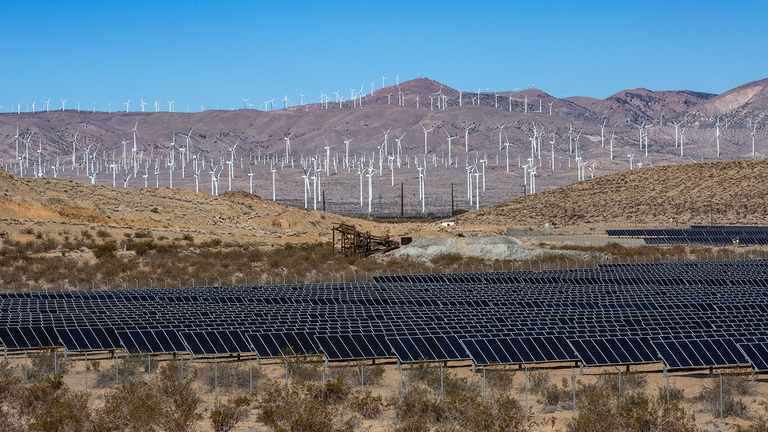https://www.lifegate.it/rinnovabili-california
- |
Over the past 38 days, California has achieved an unprecedented achievement in the field ofrenewable energy:for as many as 30 of these days, renewable energy sources have 100 percent satisfied the state's electricity demand.These periods, which vary from 15 minutes to six hours a day, represent a record for the western US state, which in the past had only reached similar heights for brief moments, such as on particularly sunny days.

California 100 percent renewable by 2035
The data relating to the energy mix come from California independent system operator (CaISO), the body responsible for managing the state's transmission networks.This result has reportedly been achieved thanks to the combination of solar, wind and hydroelectric energy.
Mark Z.Jacobson, a professor of civil and environmental engineering at Stanford University, shared a graph representative of the situation during a mid-day on April 14th.These data confirm the positive trend towards an ever-increasing use of clean energy sources.
Jacobson predicted that by 2035, California could depend solely on solar, wind and hydropower.This projection is in line with the state's official goal, which aims to use exclusively renewable sources by 2045.The measure known as "The 100 percent clean energy act of 2018" or "Senate bill 100", promoted by the local Senate also known as "SB 100" also provides for a intermediate target of 60 percent of the renewable energy mix by 2030.
But fossils still matter too much
In 2021, more than 37 percent of the state's energy came from its standard Renewables portfolio, which includes solar, wind, small hydroelectric and biomass, as well as geothermal.Also considering large hydroelectric plants and nuclear power, the percentage of low-emission energy rises to 59 percent.
At the beginning of April, the California ISO published the latest draft of the 2023-24 transmission plan, inserting 26 new projects, worth 6.1 billion dollars (5.7 billion euros), with a large part of the investment destined for offshore wind power, as reported by the site QualEnergia.Just over $4.5 billion will go toward creating three major transmission lines that would connect floating wind farms off the coast of Humboldt County.Several smaller trunk lines would then transport much of that energy to the Bay Area.It is expected that the first offshore wind farms they will start producing electricity around 2034.
The energy sector in which California excels, however, it's photovoltaic:in 2023, with 68,816 GWh of electricity from solar energy, California was the greenest American state.In second place is Texas with 31,739 GWh.
However, despite progress in clean energy, California continues to depend heavily on fossil fuels.According to recent data from the US Energy Information Administration, California is the eighth largest producer of crude oil among American states and the second largest consumer of refined petroleum products, after Texas.So, while the data highlights growing success in the adoption of clean energy, it remains clear that there is still much work to be done to reduce dependence on fossil fuels and achieve the ambitious goals set for the state's energy future.
